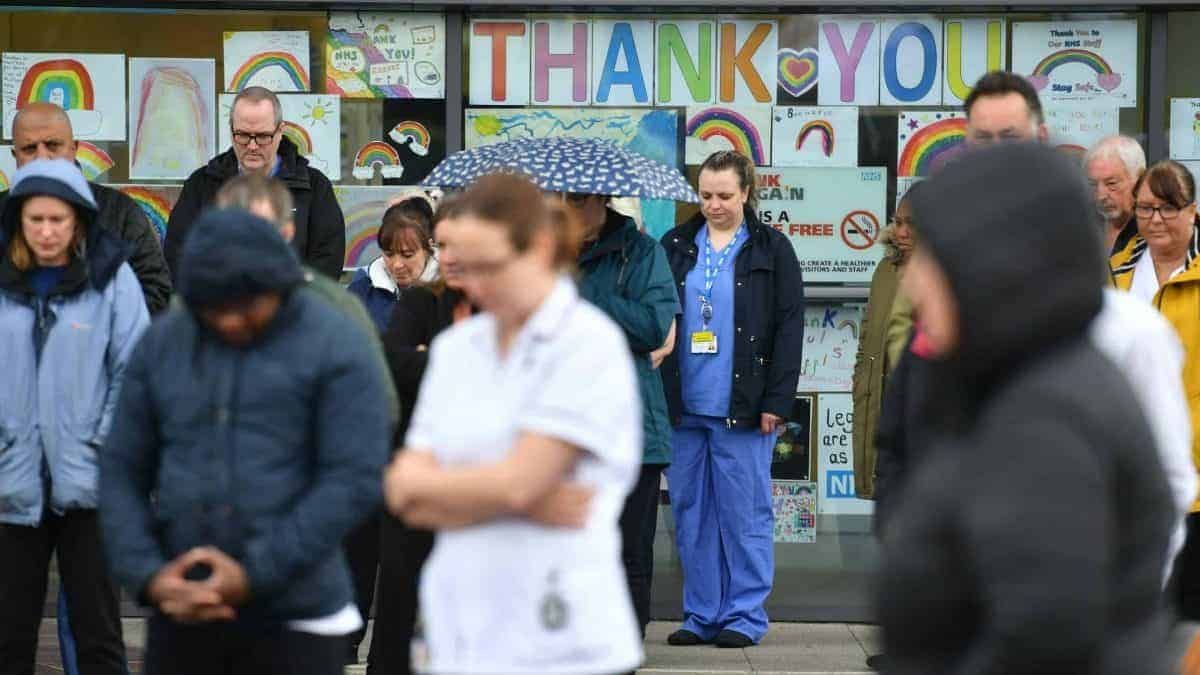
The state has had to rescue the economy twice in twelve years. The Covid-19 pandemic will cost the government hundreds of billions of pounds and the economy may shrink by up to a third. The present crisis is likely to do much more damage than the earlier 2007-8 financial rescue as it affects all parts of the economy – even Richard Branson is looking for a loan from the state.
Rishi Sunak, the UK Chancellor has said that he will spend ‘whatever it takes’ to support the NHS and the economy. He has wiped the NHS debt of £13.4 billion, is providing what amounts to a basic income for millions of employed and self-employed people, and has put together a package of loans and grants to businesses. Like the 2007-8 banking rescue, meeting the cost of the lockdown will create a huge hole in state finances.
The assumption that any expenditure not covered by state income must be funded by borrowing means a sharp rise in the national debt. The aim of reducing that debt led the post 2010 LibDem/Tory governments to impose a harsh programme of austerity. It was not the City speculators who paid the penalty – it was poor people who had a bedroom that they did not ‘need’, local councils who were stripped of money, unemployed people sanctioned at the drop of a hat and left with no money for weeks.
Already there are concerns that the current level of state spending will saddle present and future generations with massive debt repayments. As reported in TLE (22.04) George Osborne, the Chancellor who spearheaded the post 2010 cuts, is raising once again the link between state debt and the need for austerity.
Given the hardship that people and businesses are currently experiencing, it would seem unjust that they should have to pay the cost of the coronavirus rescue. They have paid through their loss of jobs and income, even with their lives, why do they need to pay again for what is in effect, only putting back some of the money that has been lost?
Although it is not widely recognised, there is an alternative source of money, a public resource. A major power of the state is the ability to create new money free of debt. However, financing the rescue by direct state funding, is dismissed as ‘printing money’. This is one of the triumphs of neoliberalism, the denial of the possibility of a publicly funded, public economy. That is, until the crisis of 2007-8 when the Bank of England used billions in new electronic money to buy back government bonds. This meant that one arm of the state, the central bank, created new money to buy the debt of another arm of the state, the government, yet those debts were never cancelled. Instead, the continuing debt was used to justify austerity.
Neoliberal policies have deemed central banks to be independent bodies and prevented them from lending directly to the state. However, facing a pandemic that was likely to claim thousands of lives, and an economy that was on its knees, the UK Chancellor had no choice but to take radical action. He used an appropriately named ‘ways and means’ mechanism, to arrange direct funding through an open-ended overdraft at the central bank.
Such direct funding is often described as ‘printing money’ evoking images of wheelbarrow loads of value-less money. Concern about the dangers of inflation are understandable. However, hyperinflation is very rare. Far from being inflationary, in the current climate, direct funding of public services may be necessary to avoid deflation and recession.
Public spending and public income do not need to be in balance. Different economic conditions may require deficits or surpluses. The important balance is between the public economy and the market. Most of the money created and spent in the public sector will find its way into the market. If the market has spare capacity it will readily absorb the extra money. If public spending is likely to overinflate the money supply any excess could be removed by higher taxes rather than by cutting public services.
Direct funding and borrowing are not necessarily in conflict. Borrowing is appropriate for large or long term projects as it spreads payment. Financial institutions such as pension and insurance funds also rely on government bonds as a safe investment. However, this must not lead to the assumption that borrowing is the only option. Increased taxation or direct funding are more progressive ways to cover deficits.
Direct funding – the ability to create new money free of debt – is an important public resource in a democracy. If it can be used to rescue the banks, why can’t it be used to rescue the people? Why should they have to pay the price?
By Professor Mary Mellor, Northumbria University. Her book Money: myths, truths and alternatives (Policy Press 2019) is available HERE